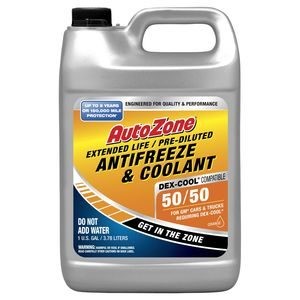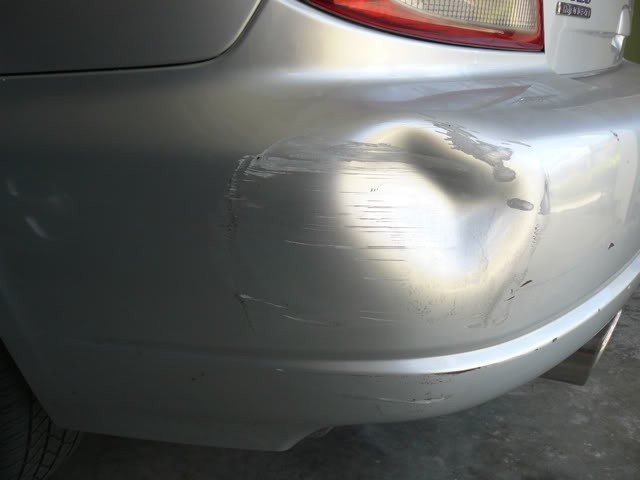How to Fix Dim Lights on a Car: A Comprehensive Guide
Fixing dim lights on a car involves diagnosing and addressing several potential issues. At CARDIAGTECH.BIZ, we provide the tools and expertise you need to restore your headlights to their optimal brightness, ensuring your safety and visibility on the road with auto repair solutions. Discover how to troubleshoot headlight problems, improve automotive lighting, and maintain your vehicle’s lighting system for peak performance.
Table of Contents
- Burnt-Out Bulb: The Prime Suspect
- Lens Oxidation: The Cloudy Culprit
- Wiring Troubles: The Hidden Hazard
- LEDs vs. Incandescent Bulbs: The Brightness Battle
- Setting Configuration: The Simple Solution
- FAQ: Your Questions Answered
1. Why Are My Car Lights So Dim? Addressing a Burnt-Out Bulb
A burnt-out bulb is often the primary reason for dim car lights. Like any light bulb, headlight bulbs have a limited lifespan and require replacement periodically. Neglecting timely bulb replacement can lead to reduced visibility and potential safety hazards.
1.1. Recognizing the Signs of a Failing Bulb
How can you tell when you need new headlight bulbs? Dimmer headlights are a telltale sign. Park your vehicle safely, turn on the headlights, and inspect both lights for brightness. If one or both appear dim or non-functional, bulb replacement is likely necessary. This simple check can prevent driving with compromised visibility.
1.2. Factors Affecting Bulb Lifespan
Frequent use, such as leaving headlights on during the day or driving extensively at night, can shorten bulb lifespan. Older vehicles with original bulbs are also prone to burnout. According to research from the Department of Transportation, regularly checking and replacing bulbs can significantly reduce the risk of accidents related to poor visibility.
1.3. Step-by-Step Guide to Replacing Headlight Bulbs
Replacing headlight bulbs is a straightforward process that can be completed with a few tools and basic knowledge. The National Highway Traffic Safety Administration (NHTSA) emphasizes the importance of proper headlight maintenance for road safety.
- Gather Your Tools: You’ll need new headlight bulbs, gloves, and possibly a screwdriver, depending on your vehicle model.
- Locate the Headlight Housing: Consult your vehicle’s owner’s manual for the exact location and access instructions.
- Disconnect the Old Bulb: Disconnect the power connector from the bulb. Be careful not to touch the glass of the new bulb with your bare hands, as oils from your skin can damage it.
- Install the New Bulb: Align the new bulb with the housing and secure it in place.
- Reconnect the Power: Reconnect the power connector to the new bulb.
- Test the Lights: Turn on your headlights to ensure the new bulb is working correctly.
1.4 Choosing the Right Bulbs from CARDIAGTECH.BIZ
At CARDIAGTECH.BIZ, we offer a variety of headlight bulbs to suit your needs.
| Bulb Type | Features | Benefits |
|---|---|---|
| Halogen Bulbs | Standard option, affordable, and widely available. | Cost-effective, easy to find, provides adequate lighting for most driving conditions. |
| LED Bulbs | Energy-efficient, long-lasting, and very bright. | Significantly brighter than halogen, longer lifespan reduces replacement frequency, lower energy consumption. |
| Xenon HID Bulbs | High intensity, bright white light, longer lifespan than halogen. | Excellent visibility, modern look, durable, and reliable. |
| High-Performance Bulbs | Enhanced brightness, improved beam pattern, optimized for specific driving conditions (e.g., night driving). | Maximizes visibility in challenging conditions, increases safety, provides a more comfortable driving experience. |
2. Why Are My Headlights So Dim but Bulbs Are New? Tackling Lens Oxidation
Lens oxidation is another common cause of dim headlights. Headlight lenses, often made of acrylic, react with the sun’s UV rays, leading to a foggy, cloudy, or yellowed appearance. This oxidation reduces light transmission, even with new bulbs.
2.1. The Science Behind Lens Oxidation
Acrylic lenses are susceptible to UV radiation, which causes chemical reactions that degrade the plastic over time. According to a study by the Society of Automotive Engineers (SAE), regular exposure to sunlight can reduce light output by as much as 80% in severely oxidized lenses.
2.2. Recognizing Oxidation
Inspect your headlight lenses for cloudiness or yellowing. If the lenses appear opaque rather than clear, oxidation is likely the culprit.
2.3. Step-by-Step Guide to Headlight Restoration
Restoring headlight lenses can significantly improve light output and visibility. Here’s a detailed process, referencing insights from the American Automobile Association (AAA):
- Gather Your Supplies: You’ll need a headlight restoration kit, which typically includes sandpaper (various grits), polishing compound, UV sealant, and applicator pads.
- Clean the Lenses: Wash the headlight lenses with soap and water, then dry them thoroughly.
- Sand the Lenses: Start with coarse-grit sandpaper to remove the oxidized layer. Wet-sand the lenses in a circular motion, gradually moving to finer grits to smooth the surface.
- Polish the Lenses: Apply polishing compound to an applicator pad and buff the lenses to restore clarity.
- Apply UV Sealant: Apply a UV sealant to protect the lenses from future oxidation. This step is crucial for long-lasting results.
2.4. Professional Restoration Services
If you prefer a professional solution, consider a headlight restoration service. Mechanics use specialized tools and products to address oxidation effectively and protect headlights from future damage. At CARDIAGTECH.BIZ, we can connect you with trusted professionals in your area.
2.5. Headlight Restoration Products Available at CARDIAGTECH.BIZ
| Product Name | Features | Benefits |
|---|---|---|
| Headlight Restoration Kit | Includes sandpaper, polishing compound, UV sealant, applicator pads. | Comprehensive solution for DIY restoration, removes oxidation, restores clarity, protects against future damage. |
| UV Sealant Spray | Protects lenses from UV radiation, prevents future oxidation. | Extends the lifespan of restored headlights, maintains clarity, ensures long-lasting performance. |
| Polishing Compound | Restores clarity to lenses, removes minor imperfections. | Improves light output, enhances visibility, provides a professional finish. |
| Professional Headlight Coating | Durable coating, provides long-term protection against oxidation. | Superior protection, withstands harsh weather conditions, reduces the need for frequent restoration. |
3. Dim Headlights Fix: Checking for Wiring Troubles
Wiring troubles can also cause dim headlights. Electrical components, including wiring harnesses and fuses, provide power to the headlights. Issues with these components can lead to dimming, misfires, or complete failure.
3.1. Common Wiring Problems
Wiring problems are less common but can occur due to tampering or DIY repairs. According to the National Electrical Manufacturers Association (NEMA), faulty wiring is a leading cause of electrical issues in vehicles.
3.2. Diagnosing Wiring Issues
An experienced mechanic can diagnose wiring troubles. They will check for loose connections, damaged wires, and blown fuses.
3.3. Step-by-Step Guide to Checking and Repairing Wiring
- Inspect Fuses: Check the headlight fuse in the fuse box. Replace any blown fuses with the correct amperage.
- Check Wiring Connections: Look for loose or corroded connections at the headlight housing and along the wiring harness. Clean and tighten any loose connections.
- Test the Wiring Harness: Use a multimeter to test the wiring harness for continuity and voltage. This will help identify any breaks or shorts in the wiring.
3.4. Seeking Professional Assistance
Wiring repairs can be complex and require specialized knowledge. If you’re not comfortable working with electrical systems, seek professional assistance from a qualified mechanic. CARDIAGTECH.BIZ can connect you with experienced technicians.
3.5. Wiring and Electrical Components Available at CARDIAGTECH.BIZ
| Component | Features | Benefits |
|---|---|---|
| Wiring Harness | High-quality materials, durable construction, vehicle-specific fit. | Ensures reliable electrical connections, prevents shorts and failures, provides long-lasting performance. |
| Fuses | Color-coded, various amperage ratings, reliable protection. | Protects electrical circuits from overloads, prevents damage to components, ensures safe operation. |
| Multimeter | Digital display, accurate readings, user-friendly interface. | Helps diagnose electrical issues, identifies faulty components, simplifies troubleshooting. |
| Electrical Tape | High-quality adhesive, heat-resistant, durable. | Insulates and protects wiring connections, prevents corrosion, ensures safe and reliable repairs. |
4. Are Your Headlights Dim or Are LEDs Just Brighter? The LED vs. Incandescent Debate
The perceived brightness of headlights can be influenced by the type of bulb used. LED headlights often appear brighter than traditional incandescent bulbs due to their light characteristics.
4.1. Understanding LED Brightness
LED lights emit a sharp white light with bluish tones, which contrasts starkly with the darkness of the night. According to the U.S. Department of Energy, LED lights can appear brighter without providing extra light due to their spectral composition.
4.2. Pros and Cons of LED Headlights
- Pros: Energy efficiency, longevity, and potential for better visibility.
- Cons: Potential glare for other drivers, causing accidents and eye strain.
4.3. Upgrading to LED Headlights
If you’re considering upgrading to LED headlights, consult with a mechanic to ensure compatibility and proper installation. It’s crucial to choose LED bulbs that meet safety standards and don’t produce excessive glare.
4.4. Alternative Bulb Options
Explore alternative bulb options available for your vehicle. Consider high-performance halogen bulbs or xenon HID bulbs for improved brightness without the harshness of LEDs. CARDIAGTECH.BIZ offers a variety of lighting solutions to suit your preferences.
4.5. Bulb Comparison Chart Available at CARDIAGTECH.BIZ
| Bulb Type | Brightness (Lumens) | Lifespan (Hours) | Energy Efficiency | Color Temperature (Kelvin) |
|---|---|---|---|---|
| Halogen | 1,000 – 1,500 | 500 – 1,000 | Low | 2,700 – 3,000 |
| LED | 2,000 – 4,000 | 20,000 – 50,000 | High | 5,000 – 6,500 |
| Xenon HID | 2,500 – 3,500 | 2,000 – 3,000 | Medium | 4,000 – 5,000 |
| High-Performance Halogen | 1,500 – 2,000 | 300 – 500 | Low | 3,200 – 3,500 |
5. Why Are My Headlights Not Working? Checking Your Setting Configuration
Sometimes, dim headlights result from simple setting misconfigurations. Modern vehicles offer various lighting options, and accidental adjustments can cause dimming or failure.
5.1. Common Setting Mistakes
Many drivers set their headlight configurations and forget about them. Accidental bumps or guest drivers can alter settings, leading to unexpected lighting issues.
5.2. Step-by-Step Guide to Checking Headlight Settings
- Locate Headlight Controls: Familiarize yourself with your vehicle’s headlight controls. Consult your owner’s manual for specific instructions.
- Verify Settings: Ensure your headlights are set to the correct mode (e.g., auto, on, off).
- Check Fog Lights: Confirm that your fog lights aren’t activated instead of your standard headlights.
5.3. Adjusting Settings
A simple adjustment of your headlight settings can often resolve dimming issues. If problems persist, proceed with further diagnostics.
5.4. Consulting Your Owner’s Manual
Your vehicle’s owner’s manual contains valuable information about headlight settings and troubleshooting tips. Refer to it for detailed guidance.
5.5. Diagnostic Tools Available at CARDIAGTECH.BIZ
| Tool Name | Features | Benefits |
|---|---|---|
| OBD-II Scanner | Reads diagnostic trouble codes, provides real-time data, user-friendly interface. | Helps diagnose electrical and lighting issues, identifies faulty sensors, simplifies troubleshooting. |
| Multimeter | Measures voltage, current, and resistance, accurate readings, durable construction. | Tests wiring connections, checks for shorts and opens, verifies electrical functionality. |
| Circuit Tester | Simple to use, LED indicator, tests for power and ground. | Quickly checks for power and ground in electrical circuits, simplifies troubleshooting, ensures proper connections. |
| Wire Stripper/Crimper | Precision cutting, ergonomic design, durable construction. | Simplifies wiring repairs, ensures secure connections, prevents loose wires and shorts. |
6. Dim Lights on Car FAQ
Here are some frequently asked questions about dim lights on cars.
6.1. Why are my headlights dim even after replacing the bulbs?
Lens oxidation or wiring issues may be the cause. Clean or restore the lenses, and check the wiring for damage.
6.2. How often should I replace my headlight bulbs?
It depends on the type of bulb. Halogen bulbs typically last 500-1,000 hours, while LED bulbs can last 20,000-50,000 hours.
6.3. Can I restore my headlights myself, or should I hire a professional?
DIY kits can be effective, but professional restoration services offer superior results and protection.
6.4. Are LED headlights better than halogen headlights?
LED headlights are more energy-efficient and longer-lasting, but some drivers find them too bright.
6.5. How can I prevent headlight oxidation?
Apply a UV sealant after cleaning or restoring your headlights.
6.6. What tools do I need to replace a headlight bulb?
Gloves, a screwdriver (if needed), and the correct replacement bulb.
6.7. Why is one of my headlights brighter than the other?
One bulb may be newer or a different type. Replace both bulbs to ensure consistent brightness.
6.8. Can dim headlights cause me to fail a vehicle inspection?
Yes, dim headlights can cause you to fail a vehicle safety inspection.
6.9. How do I know if my headlight wiring is faulty?
Check for loose connections, damaged wires, and blown fuses. Use a multimeter to test for continuity.
6.10. Where can I find quality headlight bulbs and restoration kits?
CARDIAGTECH.BIZ offers a wide range of lighting solutions and diagnostic tools to keep your headlights shining bright.
Is your vehicle struggling with dim headlights? Don’t compromise your safety or visibility. At CARDIAGTECH.BIZ, we understand the critical role of properly functioning headlights in ensuring your safety and the safety of others on the road. Our extensive range of automotive lighting solutions, including high-quality headlight bulbs, restoration kits, and diagnostic tools, are designed to meet the needs of both professional mechanics and DIY enthusiasts.
We offer specialized products and expert advice to help you diagnose and address common issues such as burnt-out bulbs, lens oxidation, and wiring problems, ensuring that your headlights perform at their best.
Contact CARDIAGTECH.BIZ today at +1 (641) 206-8880 or visit our website at CARDIAGTECH.BIZ for expert guidance and quality products. Our address is 276 Reock St, City of Orange, NJ 07050, United States. Let us help you drive with confidence and clarity, knowing your vehicle is equipped with reliable lighting.





